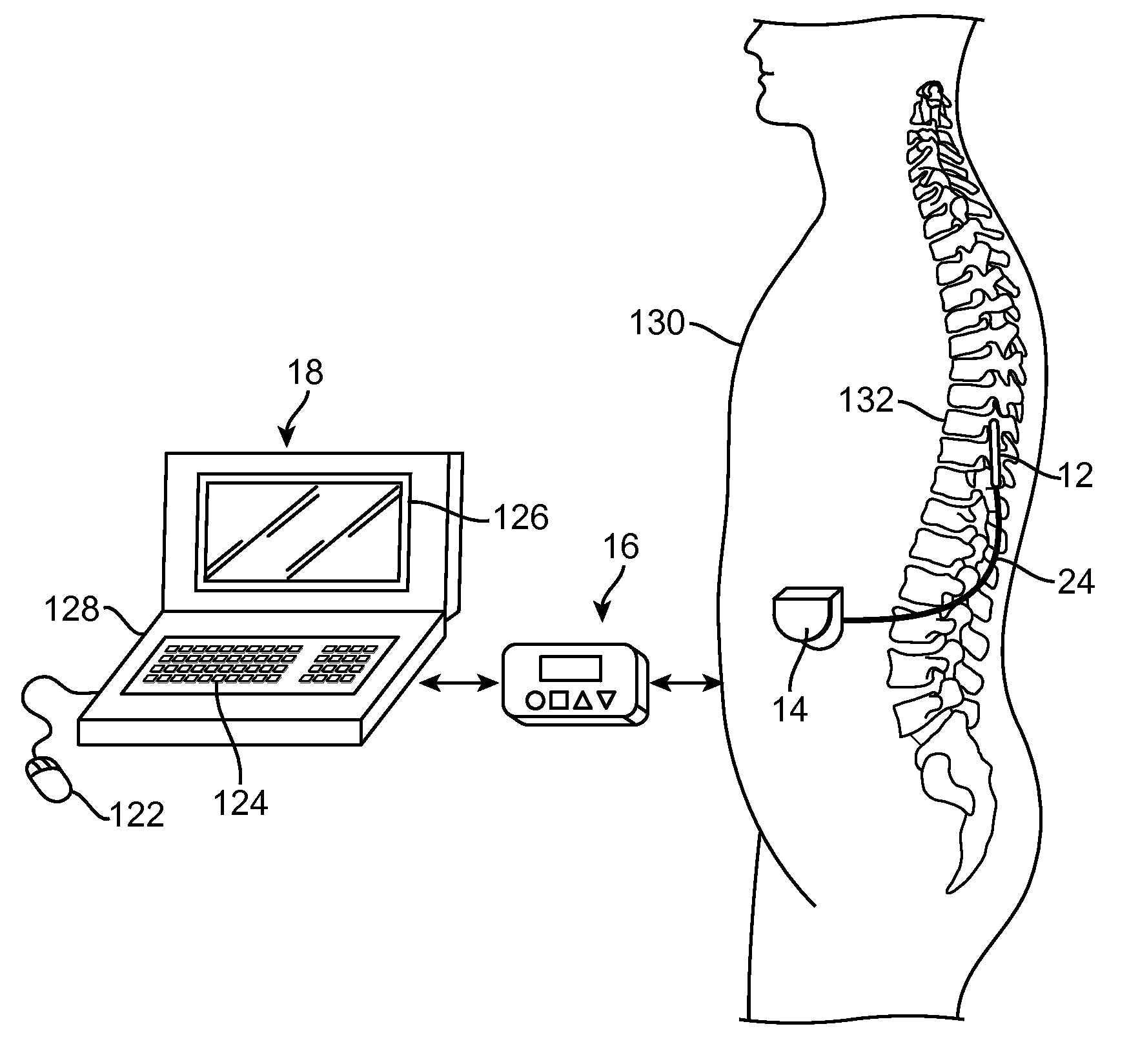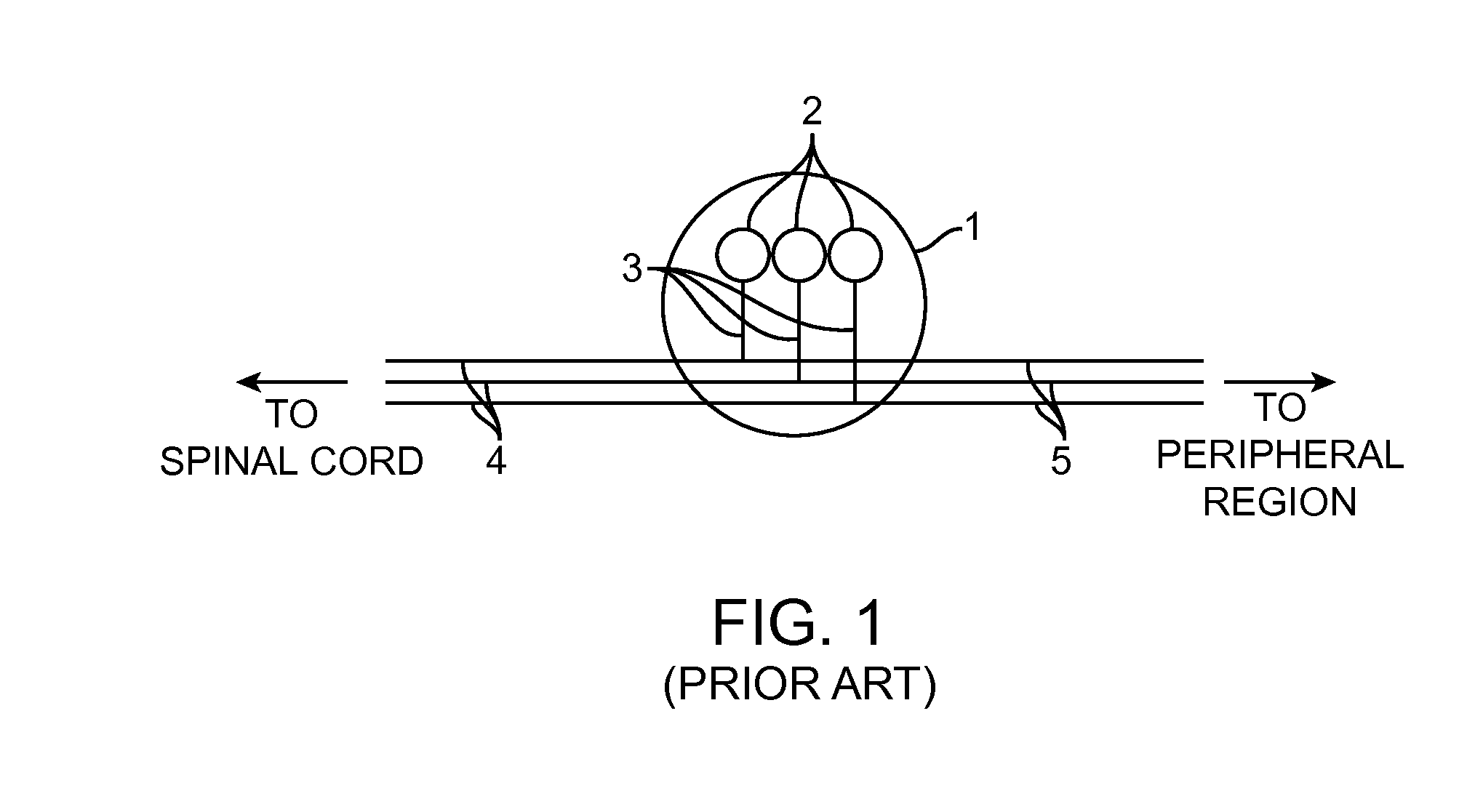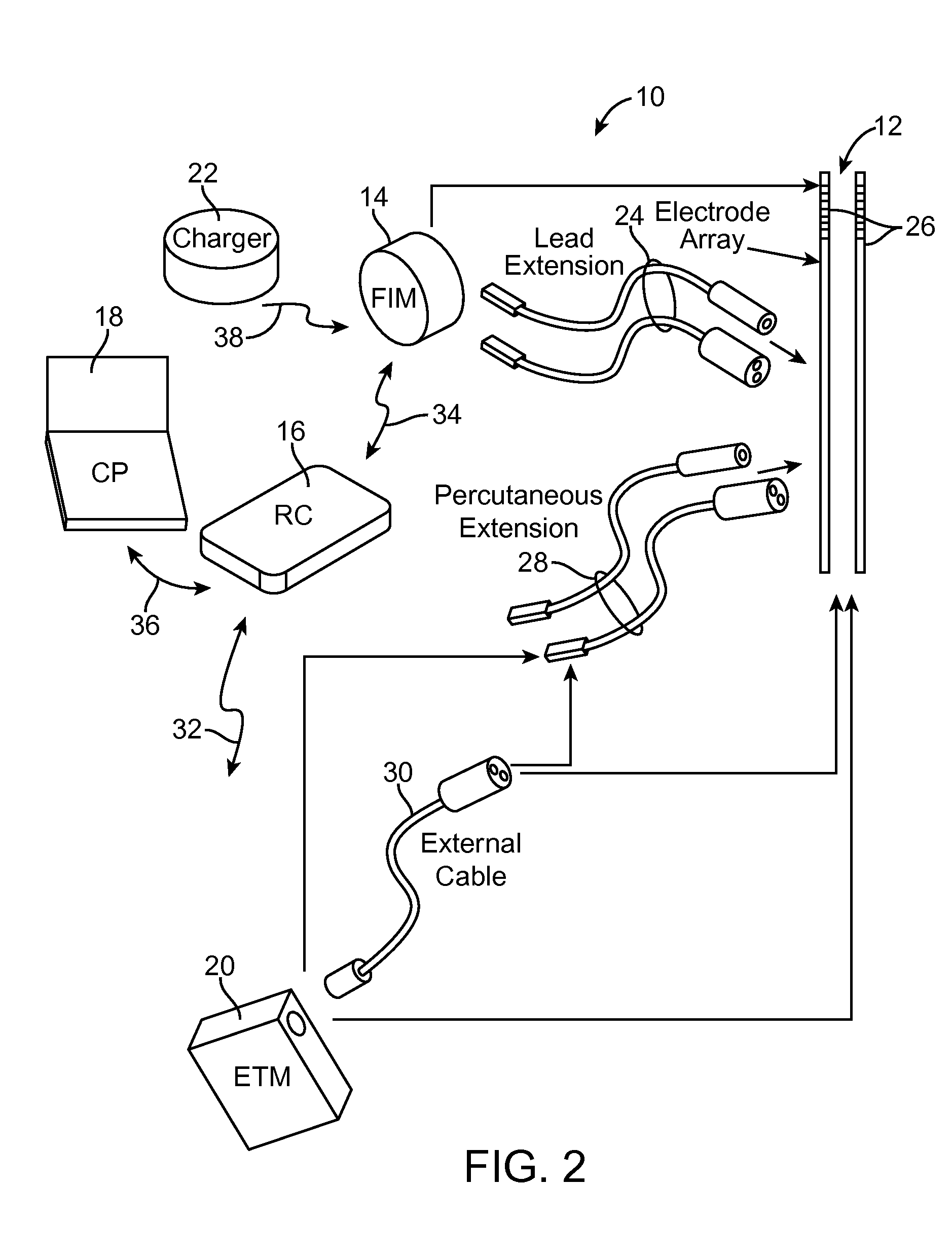Electrical stimulation method for modulation on sensory information around dorsal root ganglia
a technology of electrical stimulation and sensory information, applied in the field of tissue modulation systems, can solve the problems of ectopic electrical spiking within the sensory neurons, reducing the performance of the mitochrondrials with the sensory neurons, and oxygen deb
- Summary
- Abstract
- Description
- Claims
- Application Information
AI Technical Summary
Benefits of technology
Problems solved by technology
Method used
Image
Examples
Embodiment Construction
[0027]Turning first to FIG. 2, an exemplary neuromodulation system 10 is used to modulate the dorsal root ganglion (DRG) and surrounding neural structures. The system 10 generally includes a plurality of implantable neuromodulation leads 12, a fully implantable modulator (FIM) 14, an external control device in the form of a remote controller (RC) 16, a clinician's programmer (CP) 18, an external trial modulator (ETM) 20, and an external charger 22.
[0028]The FIM 14 is physically connected via one or more lead extensions 24 to the neuromodulation leads 12, which carry a plurality of electrodes 26. Although two neuromodulation leads 12 are illustrated, it should be appreciated that less or more neuromodulation leads 12 can be provided. As will be described in further detail below, the FIM 14 includes circuitry that delivers appropriate electrical energy to the electrodes 26 in accordance with a set of neuromodulation parameters. In alternative embodiments, the energy delivered by the F...
PUM
 Login to View More
Login to View More Abstract
Description
Claims
Application Information
 Login to View More
Login to View More - R&D
- Intellectual Property
- Life Sciences
- Materials
- Tech Scout
- Unparalleled Data Quality
- Higher Quality Content
- 60% Fewer Hallucinations
Browse by: Latest US Patents, China's latest patents, Technical Efficacy Thesaurus, Application Domain, Technology Topic, Popular Technical Reports.
© 2025 PatSnap. All rights reserved.Legal|Privacy policy|Modern Slavery Act Transparency Statement|Sitemap|About US| Contact US: help@patsnap.com



